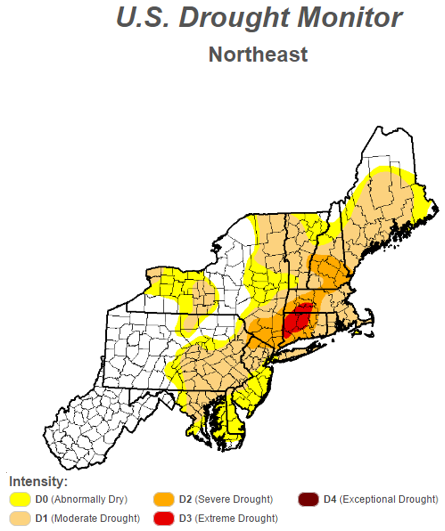When the word “drought” is mentioned, many people think of California, Texas, and the arid southwest, and rightfully so. Over the years, we’ve all seen the pictures of burned over areas, the cracked clay, or Lake Mead with the bleached bedrock showing where the water levels used to reside. What most people don’t think of is New England.
New England, an area known for warm, green summers and heavy winter snows, is currently in its worst drought in over a decade with over 60% of the area being in some level of drought. With several very dense population centers, this is affecting over 38 million people. In the rural areas, private wells have dried up and farmers face millions of dollars in lost crops. Federal agricultural officials have declared much of New Hampshire, Massachusetts and Connecticut a natural disaster area.
In response to the drought conditions, several cities and utilities have implemented water restrictions (both voluntary and mandatory) on outdoor watering during irrigation months. In fact, this summer, over one-third of Massachusetts cities implemented restrictions. Some cities are going one step further and bringing in water efficiency consultants to assess water use within city buildings and make recommendations to reduce usage.
The “good” news is, water and sewer rates within New England are typically higher than the national average. For example, Boston’s water/sewer rate is about $19.50 per 1,000 gallons while the national average rate is $9.50/1,000 gallons. This means, water conservation measures will have a greater financial impact on your bottom line and offer a more attractive payback than those installed in other parts of the country. Additionally, it is all but guaranteed that with a growing population, aging infrastructure, and dwindling supply, rate will only continue to increase.
Contact Burton Energy Group to discuss what water conservation opportunities may be available for your business and check out our website for more information.
